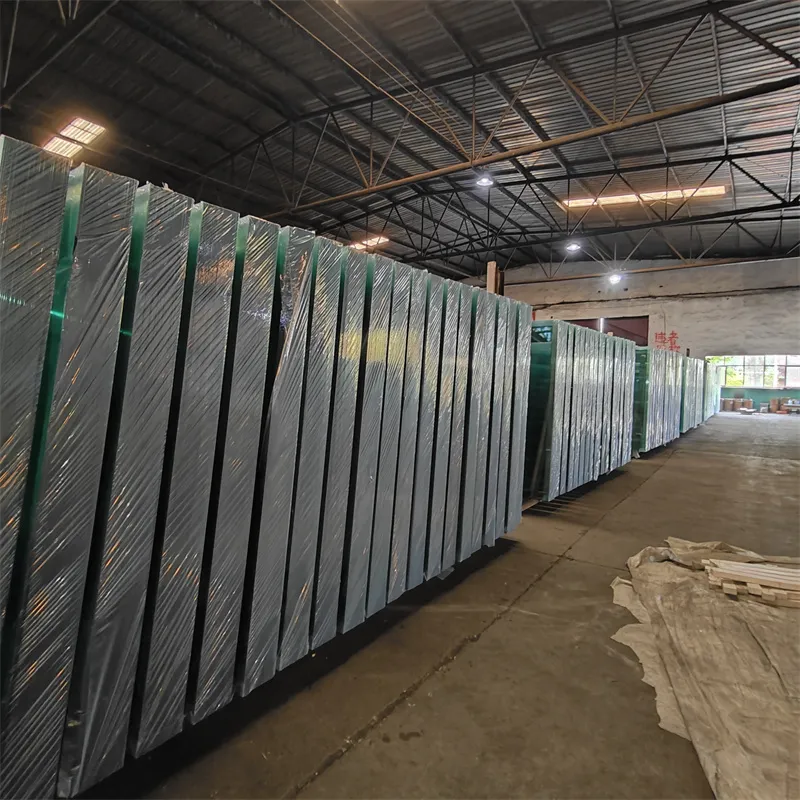Dec . 17, 2024 05:57 Back to list
Optimizing Float Glass Cutting Techniques for Efficient Production and Waste Reduction
The Art and Science of Cutting Float Glass
Float glass is a type of glass that is produced by floating molten glass on top of molten tin. This process creates glass sheets that are perfectly flat and uniform in thickness, making it a popular material for windows, mirrors, and various other applications. However, the process of cutting float glass requires both precision and skill to ensure clean edges and avoid breakage. In this article, we will explore the techniques and considerations involved in cutting float glass, as well as its applications and advantages.
Understanding Float Glass
Float glass is known for its excellent optical clarity and smooth surface, attributes that are essential for many architectural and design applications. The manufacturing process involves pouring molten glass onto a pool of molten tin, where the glass spreads out and forms a flat sheet as it cools. The resulting glass is clear and free from defects, making it ideal for further processing and cutting.
When it comes to cutting float glass, proper technique is crucial. Cutting is typically done using a glass cutter, which scores the surface of the glass. The score line acts as a predetermined breaking point, allowing the glass to be snapped along that line with minimal force. However, achieving a clean cut requires understanding the properties of glass and using the right tools and methods.
Tools and Techniques for Cutting Float Glass
1. Glass Cutter The most fundamental tool for cutting float glass is a glass cutter. This tool is designed with a sharp, hardened wheel that scores the glass surface. Depending on the thickness and type of glass, different cutters can be employed — from handheld models to more advanced automatic cutters for larger sheets.
2. Scoring When scoring the glass, it is important to apply even pressure and maintain a steady hand. The score should be a single, smooth line without any interruptions. Scoring too deeply can weaken the glass, while a shallow score may not break properly.
3. Breaking the Glass After scoring, the glass should be moved carefully to a breaking point. This can be done by placing the scored line along the edge of a table and applying even pressure downward. For larger sheets, two people are recommended to ensure that the glass breaks evenly.
cutting float glass

4. Safety Precautions Always wear safety goggles and gloves when cutting glass. Float glass can shatter unexpectedly, and sharp edges can pose significant risks. Additionally, working in a well-ventilated area is advisable to avoid inhaling any dust particles during cutting.
Applications of Float Glass
Float glass finds its application across a wide range of industries. Here are a few notable examples
- Architecture Float glass is extensively used in modern architecture for windows and facades because of its clarity and insulation properties. - Automotive In the automotive industry, float glass is used for windshields and windows due to its strength and clarity. - Interior Design In homes, float glass is often used for mirrors, table tops, and decorative elements that require a polished finish. - Solar Panels The glass used in solar panels is often float glass, as it allows for maximum sunlight transmission.
Advantages of Float Glass
One of the foremost benefits of float glass is its quality. The manufacturing process yields glass that is uniform in thickness and free from distortions, providing excellent optical clarity. Additionally, float glass can be coated or treated post-production to enhance its durability, insulation properties, or even to add color.
Another advantage is its versatility. Float glass can be cut, tempered, or laminated for various uses, making it adaptable to different design and functional needs. Furthermore, it is a sustainable material; it can be recycled and is often made from abundant raw materials.
Conclusion
Cutting float glass is both an art and a science, requiring skillful handling and proper tools to yield the best results. With its remarkable properties and applications, float glass continues to be a vital material in construction, design, and technology. As techniques in cutting and processing float glass advance, the possibilities for its applications only grow, reflecting an enduring legacy of innovation in glass manufacturing. Whether in architecture or everyday objects, float glass remains a testament to the fusion of beauty and functionality.
-
Safety and Style with Premium Laminated Glass Solutions
NewsJun.24,2025
-
Reinvents Security with Premium Wired Glass
NewsJun.24,2025
-
Premium Float Glass Line for Modern Architecture
NewsJun.24,2025
-
Low Emissivity Glass for Energy-Efficient Architecture
NewsJun.24,2025
-
High-Performance Insulated Glass Solutions for Modern Architecture
NewsJun.24,2025
-
Elevates Interior Style with Premium Silver Mirror
NewsJun.24,2025
Related PRODUCTS














